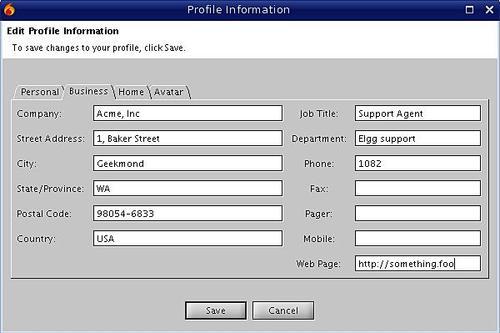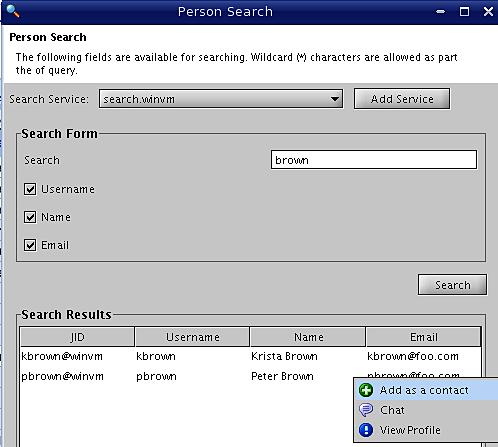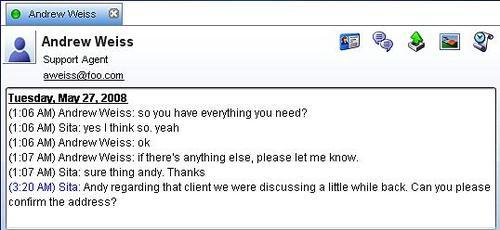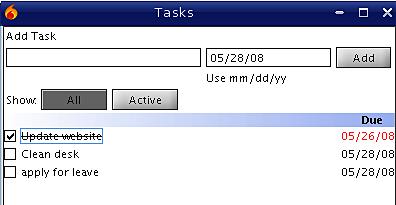A my network admin friends, asking users to switch IM clients is known to incite rebellion. Just because it makes "your job" easier, isn't reason enough for users to switch. Why should they switch clients just because it's developed by the same folks who developed the IM server?
But, unlike many clients, Spark sports several features that'll make using it enjoyable for you and your users alike. And it all begins with logging in. Depending on how you have configured users on the Openfire server, your users will be able to use Spark's Single Sign On feature (SSO) to sign onto the IM along with other network services.
If you don't use SSO on your network, all that the users really need are their usernames and passwords. Or they can create their own from Spark by clicking on the Accounts button and filling in the login details. Your users don't have to bother fiddling around with server settings, and Spark will automatically discover the host and the port it needs to establish a secure connection with the Openfire server. If they need to change their password after logging in, which they should periodically, they can do so from Spark's preferences menu (Spark | Preferences | General Chat Settings).
The first thing users should be encouraged to tinker with is their profile. Here, irrespective of which method you are using to add users to the IM server (direct or through a directory server), Spark offers a wide range of profile settings that users can complete, such as their business and personal contact details, and choosing an avatar. The best part is that users can control and make changes to their own profiles.

For an administrator, allowing users to control their own profile is the best example of the delegation powers of Spark, and helps ease your workload.
At the bottom of the main Spark interface, there's a small text bar running across the width of the client. Using this text bar, you can search for users on the system—just type in a username, email address, or a part of his or her name, and press Enter. This will launch the Person Search window. You can use this window to continue searching for the user until you've found them.

On finding the user, you can right-click on the search results entry to:
Add the user as a contact
Initiate a chat with him
View their profile
The other way to add users is by using the Add a Contact button in the Spark interface, or going to Contacts | Add Contact. From this interface, you can add the username of the user you wish to add, and optionally his nickname, by which he'll be listed in your roster and in the group in which you want to categorize him. By default, Spark has only one group (in addition to the ones created by you when adding users to Openfire) called Friends. You can add more groups by heading over to Contacts | Add Contact Group.
In addition to being an easy-to-get-started IM client, Spark packs comprehensive tools and features that make it very useful in a corporate environment.
IM is infamous for its loosely bound lingo. But in a professional setup, users are a lot more cautious when it comes to wording their messages. Although Spark won't construct sentences for you, it'll do the next best thing and make sure that you type them in correctly. Spark can check messages and mark errors as you type them, or it can also be used to spell-check the whole message once you have finished typing.
This feature doesn't offer much to an administrator, unless he's messaging himself, but it does result in grammatically clean logs, which makes browsing through them easy.
Tracking conversations is one of the best features of Spark. When a new conversation is initiated between two users, Spark displays the last few lines of their previous communication. This is useful in setting context, especially if the new communication builds upon the previous one.

Additionally, users also have access to their complete chat history. This is especially useful when accessed from the chat interface, as it gives a complete account of all conversations between the two users.
File transfer is another strong point of Spark. If you've allowed your users to transfer files, they'll be amazed by Spark's file transfer mechanism. Not only can Spark transfer multiple files of all types and sizes simultaneously, it can do so in a couple of ways.
You can use the traditional way of sending a file by locating it via the file select window. There's a button in the chat window to do this, or you can right-click on any user and choose the Send a file option from the context menu. The other Spark way of sending a file is to simply drag and drop the file into the chat window when you are conversing with the user. Before files can be transferred, they need to be accepted by the recipients, who are asked by Spark if they'd like to accept or reject the file transfer request.
Spark offers an exciting option for your users if they are collaborating on a project and need a quick and dirty way of exchanging information. For example, suppose that two accountants in different offices are going over the transfer of resources between the two offices in their spreadsheet program, and one of them needs to look into details of the other for a particular week. For this, they can use Spark's unique screen capture tool that captures and sends anything a user sees on his screen.

When the screen capture button is clicked, the user's mouse pointer turns into a cross-hair, and the user can click, hold, and drag over the area he or she needs to capture. When the mouse button is released, Spark automatically converts that area into an image, names it, and then transfers it to the other user via a regular file transfer.
By default, Spark stores transferred files under the appropriate subdirectory, with in the directory in which it is installed. Under some operating systems, such as Windows, Spark stores the files under a directory, say C: | Documents and Settings | Mayank Sharma | Spark | user | [email protected] | downloads. For user convenience, Spark offers an option to Open Containing Folder, when a user has just received a file. Users can also head over to Actions | View Downloads, which opens the folder containing the downloads. But if you'd rather change the directoryc in which the file will be stored to, a place that is easily accessible, such as My Downloads | From-Spark or something similar, that's also possible.
To change the file transfer directory from within Spark, head over to Spark | Preferences | File Transfer. In this page, you can change your download directory as well as alter the default file transfer timeout. This is the amount of time after which Spark gives up trying to send the file across to the other user. By default, Spark tries for 30 minutes before giving up.
With Spark, your users can have multiple user chats in chatrooms. We'll cover this, as well as multiple one-to-one chats in detail in Appendix B. The multiple one-to-one chats are all listed as different tabs within a single chat window, which makes them easy to manage. Depending on the activity in a particular tab, the user is notified appropriately.

To close a chat, a user can right-click on the chat tab, and choose from the following three options:
Close this particular chat
Close all chats except the selected one
Close all stale chats—stale chats are chats which have been inactive for a particular duration of time
If your company policy permits, you can allow users to add external contacts from their public access IM networks. Spark is aware of the users added via a gateway, and handles them transparently without any issues. Depending on how the service has been configured, users have the ability to enter or change their login information. In addition to exporting the users, Spark also maintains them in the groups under which they have been arranged, on the public IM service.

Because gateways allow users to go beyond the limits of the controlled Openfire environment, enabling gateways is harrowing for an admin. But Openfire and Spark keep the external conversations under the purview of the internal policies, which provides a safeguard against abuse.
Remember the section where we configured Openfire to allow users to broadcast messages to other users? Depending on how you have configured the service (whether all users can broadcast or only some), users can broadcast a message by heading to Actions | Broadcast Message. This pops open a window that allows users to:
Write the broadcast message
Select the people/users to broadcast it to
Decide whether to send the broadcast as a normal message, which opens a chat window, or an alert notification, which displays the message in a pop-up alert box
Of course, at the moment, Spark is the only client that works with Openfire's Fastpath feature. So if you are running an online helpdesk, like the one we set up in Chapter 11, your agents need to be running Spark in order to be accessible to online users.
One of the most powerful features that users have access to with Spark is the ability to search through chat transcripts based on a particular keyword. Remember the search text bar at the bottom used for searching people? On the far left of the text bar, you'll notice a small icon. Clicking on this reveals a drop-down menu, which lists two options—Person Search and Chat Transcripts. We've already looked at the person search feature. When the Chat Transcript option is selected, Spark searches through the chat logs looking for the entered text string.
Spark also doubles up as a personal note-taking application, and a basic task reminder. Both of these tools can be launched from within the Spark interface via their respective buttons. When taking notes, users need to click the Save button to save the note.

To add a task, users have to give it a name that is descriptive, attach a planned date of completion to it, and click the Add button. When tasks are completed, you can click on the checkbox adjacent to them, which strikes off a particular task from the list of active tasks. The All tab lists all tasks, whether completed, or pending.



